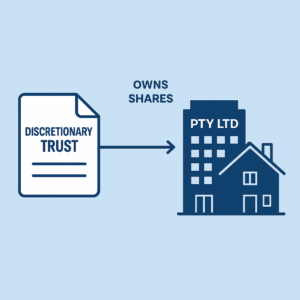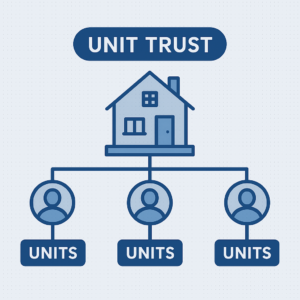Choosing the Right Trust for Your Investment Property: Discretionary vs Unit Trusts
When it comes to property investment, selecting the right trust structure can have significant financial and tax implications. The two most common trust structures in Australia are discretionary trusts and unit trusts, each offering unique benefits depending on your investment strategy.

Key Benefits of a Discretionary Trust
A discretionary trust (also known as a family trust) gives the trustee full control over distributing income and capital to beneficiaries. Some of the main advantages include:
- Flexible Income Distribution – Trustees can allocate income in a tax-effective manner to beneficiaries, helping to minimise overall tax liability.
- Asset Protection – Assets held in the trust are generally safeguarded from creditors and legal claims against individual beneficiaries.
- Estate Planning Benefits – A discretionary trust allows wealth to be managed across generations without triggering capital gains tax upon inheritance.
- Potential Tax Benefits – While losses are quarantined within the trust, they can be offset against future income within the trust, making it suitable for long-term investment planning.
Consideration: Loss Quarantining & Income Distribution Strategy
One key downside for property investors is that any losses incurred within the trust cannot be distributed to beneficiaries. Instead, these losses are quarantined within the trust and can only be offset against future income earned by the trust. A common strategy is to use a second discretionary trust generating positive income to distribute earnings to the property-holding trust, allowing it to utilise the quarantined losses and reduce taxable income.
Key Benefits of a Unit Trust
A unit trust operates more like a partnership, where unit holders own fixed portions of the trust’s assets and income. Key benefits include:
- Pass-Through of Tax Benefits – Unlike discretionary trusts, unit trusts allow losses to flow through to unit holders, enabling them to offset the losses against personal income.
- Clear Ownership Structure – Each unit holder has a defined stake in the trust, making it easier to allocate income and capital gains.
- Investment-Friendly Structure – Commonly used for joint property investments or syndicates where multiple parties hold fixed entitlements.
Interest Deduction and Loan Structuring
If a loan is taken out by the unit trust to purchase an investment property, the interest expense belongs to the trust, not the individual unit holders. Unlike a discretionary trust, where income distribution can be adjusted, a unit trust must issue additional legal documents (such as a loan agreement) to properly shift the interest deduction to the individual unit holders. Without this documentation, the ATO may not allow individual unitholders to claim the interest deduction on their personal tax returns.
Self-Sustaining Trusts and Lender Considerations
A self-sustaining trust is a trust that generates enough income to cover its own expenses, including loan repayments, without relying on external income distributions. Some lenders may ignore the loan of a self-sustaining trust when assessing an individual borrower’s serviceability, as the trust is not dependent on external income sources. This can be particularly beneficial for investors who want to keep their personal borrowing capacity intact while holding investment properties under a trust structure.
However, lenders have different policies regarding self-sustaining trusts, so it’s important to seek professional advice and confirm lender requirements before structuring a loan within a trust.
Choosing the Right Trust Structure for Your Investment Property
Both discretionary and unit trusts have their pros and cons. Here’s a quick comparison:
| Feature | Discretionary Trust | Unit Trust |
|---|---|---|
| Control over income distribution | High | Fixed (based on unit holdings) |
| Loss quarantining | Yes (cannot distribute losses) | No (losses flow to unit holders) |
| Asset protection | High | Moderate |
| Interest deduction on loans | Stays within trust | Requires legal documents to shift to unit holders |
| Suitable for | Long-term wealth building with flexible income distribution | Investors wanting direct tax benefits from losses |
| Loan treatment by lenders | May be excluded if self-sustaining | Typically included in serviceability assessment |
Final Thoughts
Choosing the right trust structure for your investment property depends on your financial goals, tax strategy, and long-term investment plans. A discretionary trust is great for flexibility and asset protection but requires strategic income planning to utilise losses. Meanwhile, a unit trust allows direct tax benefits on losses but may require extra legal work to claim interest deductions properly.
Additionally, if you are considering using a trust structure, understanding lender treatment of self-sustaining trusts can be an important factor in managing borrowing capacity.
Before deciding, it’s best to consult with a tax specialist, accountant, or mortgage broker to ensure your trust structure aligns with your investment strategy, lender requirements, and ATO compliance.
Click HERE to book a discovery call with us and see how Trustify can help you structure your property portfolio.
Others
-
October 20, 2025 Buying Property Under Your Personal Name in Australia: Pros and Cons
-
October 18, 2025 Service Trust Business Structure in Australia




